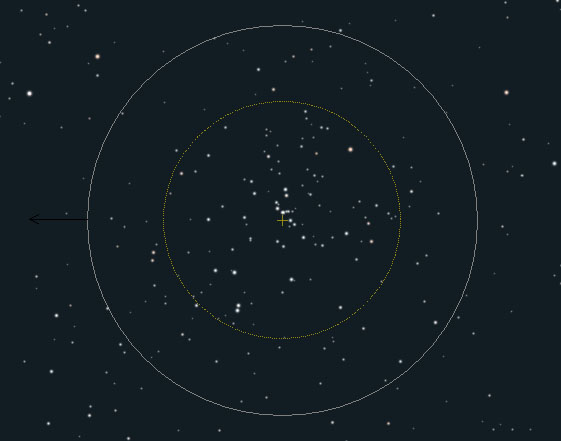M48 was apparently
discovered by Messier in 1771, but it was long considered
"lost" because there is no object at the position given.
Allowing for a 5o
error in declination matches M48 with the open cluster NGC 2548.
Given the sparse nature of this part of the sky and the matching
descriptions it seems clear that these are one in the same object.

This cluster is large and
spread out so use low power.

The field in a 6-inch at
50x. North is down and east is to the right.
Burnham's describes M48
thusly: "Generally triangular in outline, the cluster is
dominated by a central chain-like grouping of ten or so 10th and
11th magnitude stars; several dozen fainter members increase the
total population to about 50 stars down to 13th magnitude."
I'm
always struck by an umbrella or parachute shape derived from a long,
arcing chain of stars. A bright red star can be found some
distance away from this curving star chain, to the inside of the
curve. It's easy for me to imagine the lines of a
parachute connecting this star to the curving canopy above.
The star seemingly gliding to earth is HD 69180 (8.5 magnitude, K0). |